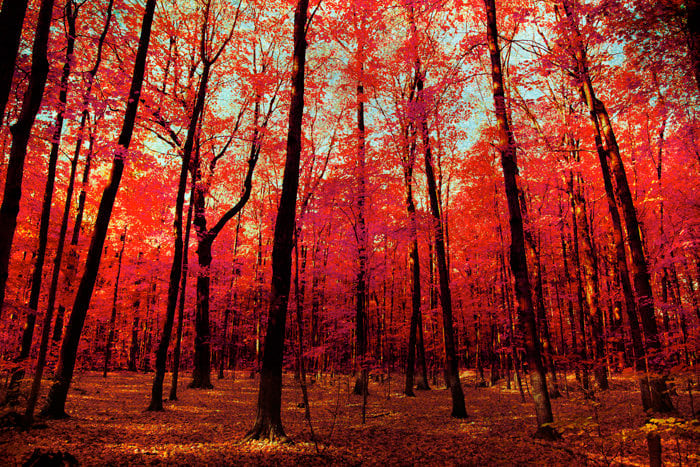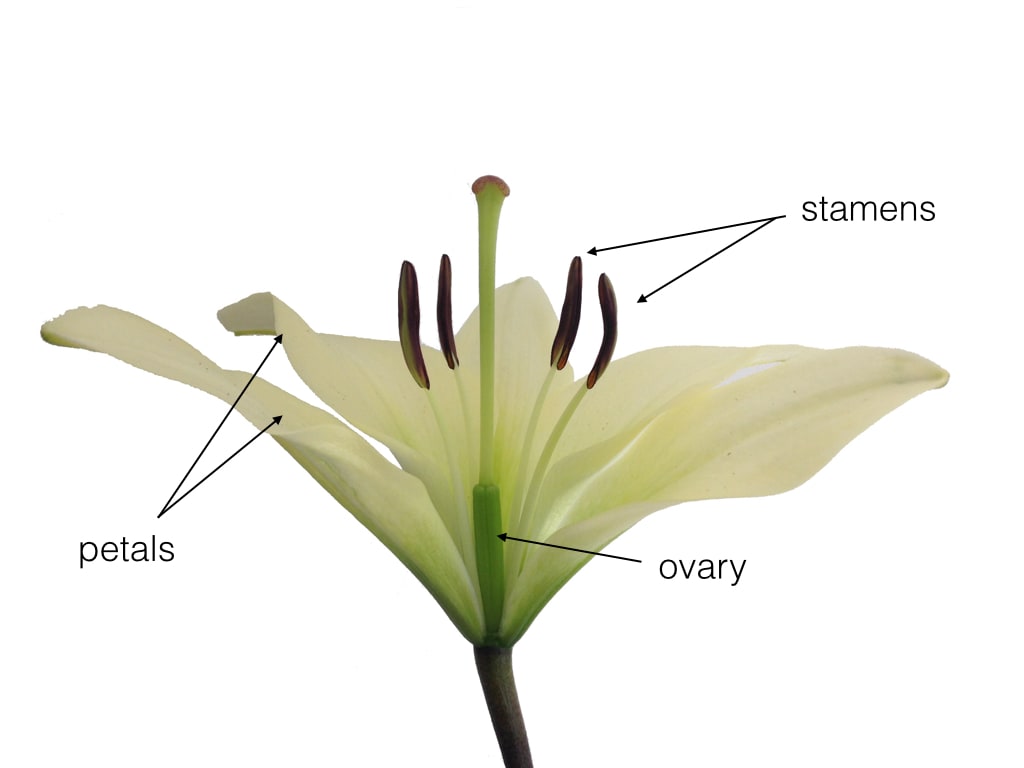
Discuss:
Where do you think all these trees came from?


Quick check:
Why don't maple seeds form until after a windy day?

Discuss:
Can you think of other ways for pollen to get from one flower to another?

Discuss:
You notice a lot of hummingbirds visiting the park near where you live, but not very many bees. How would you explain this?

 After the dissection, discuss the questions on the next slide -->
After the dissection, discuss the questions on the next slide -->
Discuss:
Where you able to find the eggs? If not, why do you think they were so hard to find?
Were you able to find pollen? If not, why do you think it was hard to find?
What other flowers do you know of that you might want to dissect next?
Here are two videos that can reinforce students understanding of the relationship of pollinators and flowers.
The first is a bit of slightly goofy, educational fun from the "singing zoologist." This short stop-motion animation describes the interaction of flowers and bees in kid-friendly terms.
The second possible follow-up is a brief and factual video of insects pollinating flowers, produced by the Missouri Department of Conservation.
Bees, butterflies, and birds aren't the only animals that pollinate plants. This reading describes how the Saguaro cactus depends on bats to move pollen from flower to flower.
If your students are interested in seeing how bats pollinate plants, show them these amazing photos of bats in action. (Click on a photo to enlarge it.)
You can extend the Flower Dissection activity by bringing in a mixed bouquet of flowers. Let students examine a variety of flowers and look for the parts that they found in the dissection. Finding the pistil, stamens, and ovary will be easy in flowers similar to the lily, like irises, tulips, amaryllis, daffodils, and gladiolus flowers, since all of these have parts similar to the lily.
If you and your students are up for a challenge, include a greater variety of flowers. Some flowers—like daisies, dandelions, and sunflowers—are made of many small flowers packed together, with parts too tiny to see without magnification.
If you have access to a garden with flowers, have students spend some time on a sunny afternoon observing what pollinators visit the flowers.
Have each student choose a flower that's in the sunlight and watch it for 5 minutes. During this time, have students write down what kinds of insects or birds visit their flowers and how long each pollinator remains in or on the flower. Have students describe or draw their flower, noting what might attract insects to the flower. Does it have wide petals, a sweet smell, a bright color?
Back in the classroom, discuss what students noticed. Did certain insects visit one type of flower more than others?
For more ideas on observation in the garden, visit this site from Dever Urban Gardens.
In this Mystery, students will learn how and why flowers are pollinated. In the activity they will dissect a flower.
Preview activityEach student will need:
Thanks for your feedback! If you have a question or need help, please contact us. Please consider sharing your review:
Sorry the lesson didn’t go well. We read every single review in an effort to improve our Mysteries.
Thanks for letting us know. We’ll wait to ask you for feedback until after you've actually taught it.
Thanks for the feedback! We read every single review in an effort to improve our Mysteries.
Please follow these steps:
Locked
6:10

Why is the sky blue?
Locked
4:41

Why do we call them doughnuts?
Locked
5:16

Could a turtle live outside its shell?
Your membership is expired. The archive of past Mini Lessons is not included in your limited access.
View pricing